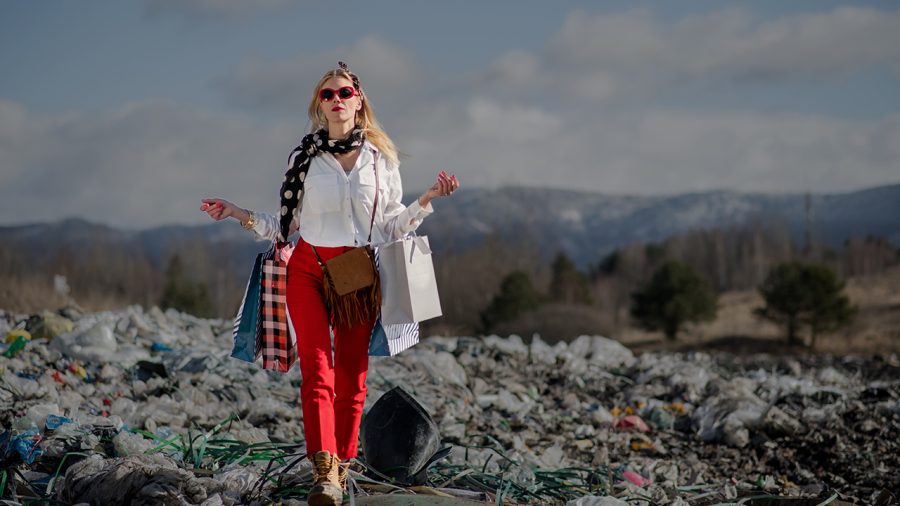The Fast Fashion Fallacy and How Social Media Fans the Flames
April 22, 2023
The surge in popularity of social media influence witnessed in commercial industries has raised many questions and in turn, conflicts, one of these conflicts being fast fashion. “Fast fashion” is a term used to describe textiles made in an unsustainable way, mainly mass produced and distributed online. Some examples of this are SHEIN, Zara, GAP, Forever 21, ect. The problems many have with this business configuration are not based on the clothes themselves (although some are) but the supposedly immoral practices displayed in their employment and production. One would wonder if these bold claims have any backing, or if they are redirect spread by independently owned businesses wishing to bring more customers to their products.
Environmental health is a huge concern within recent years, related to corporations or not. For instance, the 2022 Yale climate change survey reported 64% of Americans were at some level worried about the environment and 40% stated it is important to take action in the hopes of saving our environment. With this information it comes as no surprise that many consumers are more conscious of what exactly they are buying and whether or not it could harm the earth, however this concern does not seem to outweigh the accessibility of brands that mass produce as their profits show only growth through the years.
Although it could be argued that social media is a helpful source in the spreading of information regarding climate change, it appears that the very tool helping to educate is being used to advertise the very companies many are against. This can be displayed through the rising use and near addiction of social platforms (such as Facebook, TikTok and Instagram), and companies who wish to exploit it. As stated in Forbes, over 70% of businesses depend on social media to market their company and products and in turn, 90% of business executives agreed that companies that did not engage in social media will ultimately fail to find a strong customer base. Additionally, 0ver 80% of consumers stated that they found and bought a multitude of online products because an influencer had recommended it, often based on impulse purchases (Frontiers). Overall downright proving the correlation and causation associated with social media and marketing for a variety of products.
Why is this bad? Well fast fashion as a business model is extremely controversial because through numerous accounts of factory workers producing fast fashion retail, it is found in these workcamps employed by US businesses there is little pay for an abundance of work. One case of this being SHEIN factories, outsourced to China the workers reported spending hours to create one piece of clothing for .14 yuan or 2 cents. The average worker is paid 4,000 yuan or $556 a month, making approximately 500 garments a day, over 10,000 accumulated as shown by the Business and Human Rights Resource Center. On top of immoral working conditions the environmental impact of these companies is astronomically high. The textile waste produced each year is increasing by the minute all thanks to the cheap quality and devaluation of clothing in general pioneered by monthly trends and fast fashion following suit. In 2018, 17 million tons of clothing was thrown to landfills by Americans alone and seeing that the decomposition rate of most clothing is up to 200 years, there is no doubt a build up of these garments especially considering the swift rate at which fashion trends come and go.
With all considered, I would have to side with self proclaimed “de-influencers” (those who speak out against popular brands) as no good comes out of these practices. Despite the low cost, there is no value in these brand’s products utilizing artificial fabrics and overworking those who stitch them together. It should be noted that the consumers at fault here are not those who can’t afford name-brand but the ones who spend hundreds of thousands of dollars on try-on hauls only to discard of their purchases after recording their videos as well as those who advocate for such companies. Especially considering the main waste producers in the world are the rich. In closing, although the corporate greed that runs these companies will likely not dissipate, we as consumers must stand together to regulate employment standards and enforce stricter environmental laws surrounding such businesses or at the very least avoid these brands and save our money for needs, not wants.


